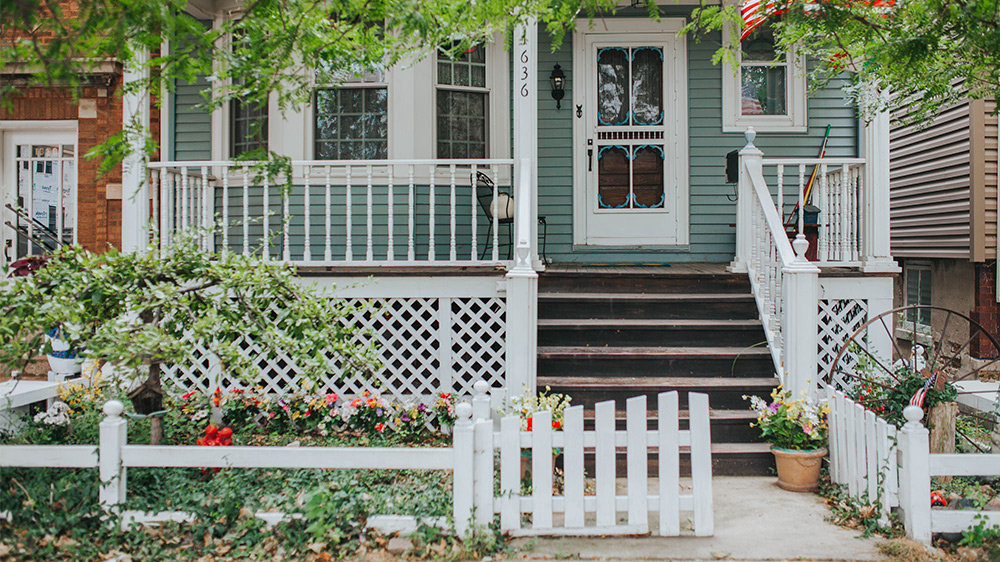
Nearly 40 million of us move in the summer and begin to plan in April. If you are moving this season, we want to help you protect your precious belongings and make your move a smooth one!
Before you start to pack, make a game plan. Which of your items are fragile? What will you need to pack them? We’ve seen some folks pack themselves so, unfortunately, we know which household items are most likely to break and typically aren’t packed properly. We have compiled a list of the top 10 items damaged when moving. It’s surprising what items make the list. Not only have we complied the most breakable list, we’ve included tips on how to protect them properly so you can “break” this pattern.
1. Drinking Glasses
It is no surprise glasses are the #1 breakable. But, with simple steps you can ensure they arrive in one piece.
Protect: One of the key factors to keeping your glasses and wine glasses from breaking or getting crushed is using the proper box. Use a “dishpack” box that has double thick walls for extra protection. Place a glass on packing paper horizontally. Grab a corner of the packing paper and roll the glass into the paper. Make sure to tuck the sides of the paper in, like you would do wrapping a burrito. Repeat 3-5 times (depending on thickness of glass) with more sheets of packing paper. Make sure to label your glass burrito: “Wine Glass” so it won’t get tossed aside with the packing paper during the unpacking process. Cushion the bottom of box with crumpled packing paper. Place the wrapped glasses vertically (yes, you read that correctly: VERTICALLY) in one layer in the box. They are much more secure vertically. After completing the first layer, place packing paper on top. Repeat these layers until the box is full. Fill all remaining space with crumpled packing paper.
2. Plates
The biggest moving crime — plates are often placed in boxes without enough packing paper. You don’t want to hear the dishes rattle in the box!
Protect: To keep plates from breaking, first wrap each plate in packing paper. Repeat 3-5 times with more sheets of packing paper until the plate is properly secured & cushioned. Label your little plate package: “Plate.” Again, use a secure dishpack box. Always, use plenty of tape on the bottom and tops of every moving box, just don’t use one strip of tape, use multiple strips and run the tape both directions to make sure that box is secure. Before placing any of the wrapped plates in the box, cushion the bottom of box with crippled packing paper. Then place the wrapped plates VERTICALLY in one layer in the box. After completing one layer, place packing paper on top. Repeat these layers until the box is full. Once the box is full, fill any remaining space with crumpled packing paper.
3. Artwork
Glass artwork often breaks because there is not enough cushioning in the moving box and the top of the box is left with a gap. The top of the box then collapses and the piece of art breaks.
Protect: To protect artwork from breaking use a picture box. Line the bottom of the box with crumpled paper. Place the glass art in the box, then stuff front, back and along the top with paper and or eco-bubble wrap. You want to be sure the box is completed packed with paper (top, bottom and sides) with no air gaps.
4. Lamp Shades
Lamp shades are an awkward shape and large, making it difficult to pack. If not packed properly, they can easily be dented or torn.
Protect: Wrap the lamp shade in eco-bubble wrap, covering every inch. Then fill the interior cavity of the lamp shade with packing paper (do not use newspaper as the print may rub off onto your lamp shade). Fill the box with enough packing paper to keep the shade from shifting around inside. Do not place anything on top of the shade, not even soft items such as linens. Use only packing paper to secure the lamp shade from shifting.
5. Liquid Cleaning Supplies
Many times homeowners pack bottles of liquid cleaning supplies without sealing them properly. This causes leaks and damages things inside and outside of the box. Do not pack or move flammable supplies!
Protect: First, remove the cap from each bottle and place a small piece of plastic wrap over the opening. Then tightly screw the cap back on. Use tape again to secure the cap to the bottle. Begin placing the cleaning products in a small book size box and check the weight as you go. You don’t want to pack the box too heavy. When the box is full and not too heavy, place packing paper all around the bottles to keep them from shifting. And, this is important, remember on every box be sure to use more than one strip of tape on the bottom and top of the box and run the tape in multiple directions. When a box is not taped properly, boxes can open at the bottom and spill on the floor. Always, label every box with its contents, room in the new home where the box should go and directional arrows pointing up. Repeat the label on each and every side of the box. You will hate us for this tip while you’re writing and rewriting the same thing over and over again and love us later when you have stacks of boxes and don’t have to turn boxes around to find out what’s what.
6. Wine & Liquor Bottles:
Again these bottles can easily leak or break, and damage items in and outside of the box.
Protect: Use a divided/cell box you can get free from a specialty wine shop or liquor store, or purchase a cell kit from a moving store. Use smaller boxes so they are easy to lift and carry. Again, be sure you double and even triple tape the bottom of the box. If you’re packing opened bottles, ensure they are properly sealed by tightening the caps. Tape the caps on to the bottles. Roll each bottle in packing paper with 3-4 layers of paper. Secure the wrapping with tape and make sure there are no loose ends. Label the bottle: “Bordeaux.” Finally, place the bottle into the box. If there’s any space or gaps between the bottle and the divider, fill it with paper. Make sure the box is not too heavy.
7. Mirrors
The big mistake with mirrors is that people pack them in picture boxes without any eco-bubble around the mirror. If the front of the mirror faces the wall of the box without protection, it will break.
Protect: Use a flat box or have your movers pack the mirrors in a custom wood crate to provide extra protection. If you’re doing the packing, line the flat box with crushed packing paper to create a padded bed for the mirror. Wrap the mirror completely in multiple sheets of paper or eco-bubble. Tape the wrapping tightly around the mirror and place the mirror in the box. Fill any gaps with more crumpled paper. Only pack one mirror to a box.
8. Glass Pictures
Glass picture frames are easily broken if not packed in the right box. We want to keep those precious memories in one piece!
Protect: Use a picture box. Line the bottom of box with crumpled packing paper. Wrap each picture frame in packing paper or eco-bubble and pack each frame in the box vertically. Stuff packing paper in between each picture and on top, making sure nothing will shift.
9. Stereo & Audio Equipment:
The reason stereo and audio equipment gets damaged is folks stack a few components in the same box and they do not put any layers of padding in-between the pieces of equipment.
Protect: If possible, pack your stereo equipment in their original cartons. If you did not keep their original boxes, use a dishpak box. Remember, dishpaks are specially designed boxes to handle and protect fragile items. If you can’t find dishpaks, use double corrugated boxes. After double taping the bottom of the box in the both directions, pack the bottom of each box with crumbled packing paper for padding. Wrap each electronic component separately in eco-bubble. Pull the wrap over and tape it all together. Make sure the item is completely covered. Place it up right, vertically in the box. Repeat this process for the next big item then place it vertically in the box next to the first item. Do not stack! Stuff packing paper in open spaces and on top for extra cushion.
10. Books:
This one is a surprising one, but if books are packed improperly they can actually get damaged. When books are placed too tight together the edges get folded and covers get damaged. Also, if books are packed with too many air pockets/gaps inside the box they can shift during transportation and get damaged (smashed corners, wrinkled covers, etc).
Protect: Use a book box. Place books flat, horizontally and stack them with the heaviest books on the bottom and the paperback books on top. Be sure not to make the box too heavy. Pack paper on top and sides if there are any air gaps.
With these steps your move will be unbreakable! Remember, you can always do some of the packing yourself and leave the rest to the professionals.

 Facebook
Facebook
 Twitter
Twitter
 Pinterest
Pinterest
 Copy Link
Copy Link














